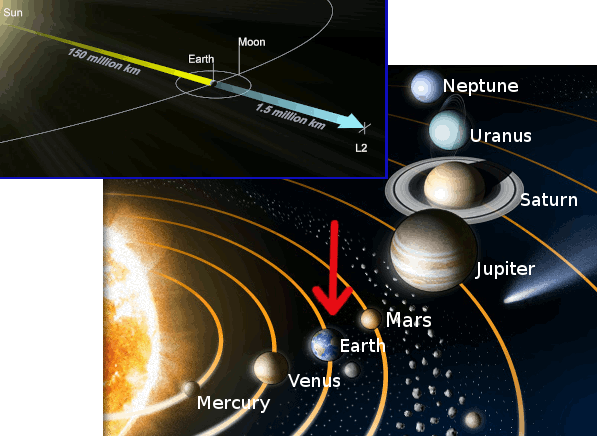
Circle the area on this map

D. Webb is traveling far beyond the Moon to a spot cold enough for its infrared detectors to search for light from the first stars and galaxies that formed after the Big Bang nearly 14 billion years ago. Astronomers also hope to use the telescope to study the atmosphere of exoplanets - worlds orbiting other stars.
D. These points get their name from Joseph-Louis Lagrange, an 18th Century mathematician and astronomer who discovered the last two of the five points. Webb is traveling to Earth’s L2 point where a large heat shield has been designed to protect the telescope from the Sun and the reflective heat of the Earth and moon.
D. The Webb sunshield has five layers of very thin metal-coated plastic sheets. It is about the size of a tennis court and will remain between the telescope and the Sun, Earth and Moon. The Sun side of the shield will be as hot as 230 degrees Fahrenheit, while the telescope side will be 390 degrees below zero on the Fahrenheit scale.
B. Hubble’s orbit ranges between 333.7 and 336.1 miles. Space shuttle astronauts were able to adjust the telescope’s focus in 1993 after a flawed mirror caused blurry images. Webb has already passed the Moon – the farthest away from Earth any human being has gone.